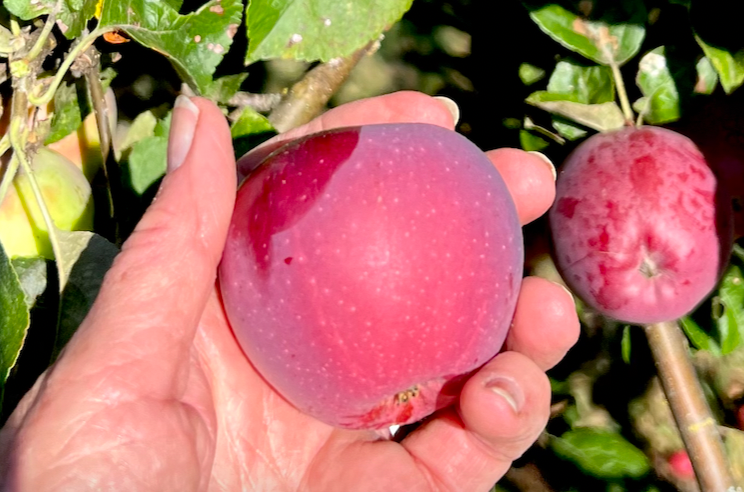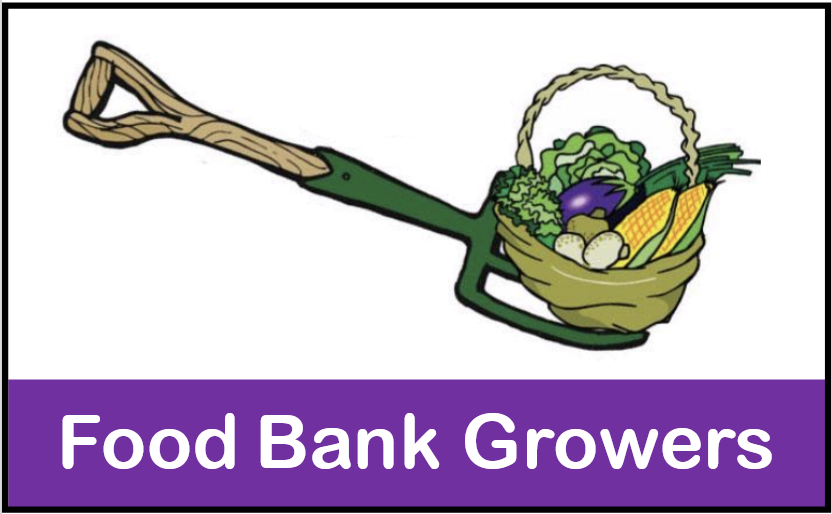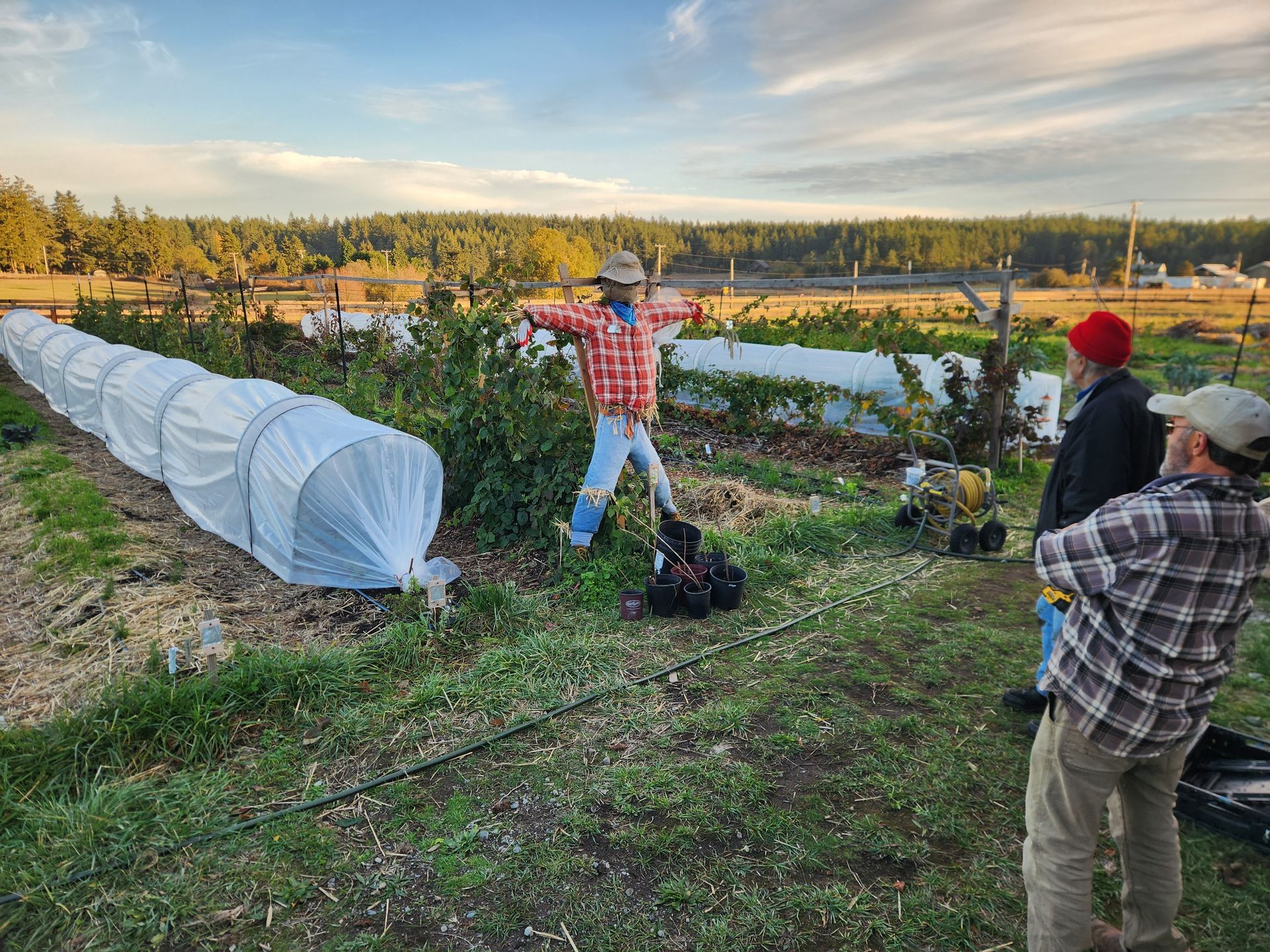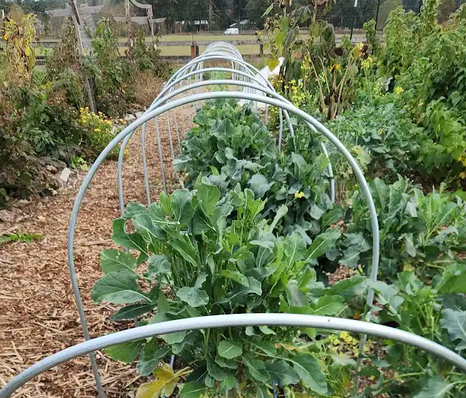Newsletter October 2023

The time of year when there is lots to pick from...
In this Issue...
- In the Garden this month…
- Year-to-Date Harvest Numbers
- On the Calendar - Upcoming Events
- Recent Postings
- How to Volunteer
In the Garden this October - By Dianna Wiklund, FBG Garden Coordinator
According to multiple sources the Quimper peninsula will be slightly cooler and wetter than normal for the first half of the month then slightly warmer and drier the second half. Our average is High of 55° F and a Low of 46° F with about a total of 2” of rain. We are unlikely to need much more watering outside of our green/hoop houses.
October is all about GARLIC. This is the time to plant. If you haven’t ordered your seed garlic it is probably too late. You might find some locally or I have planted store garlic and had good luck but it is always a risk as it was not grown to plant it may carry diseases with it. It is a gamble that can take years to recover from.
Harvest: All the wonderful summer crops. Bring in the last of your beans and peas.
- Watch your summer squash and bring in before they get eaten by something else or frost damaged.
- Check your winter squash for hardness (should resist a fingernail scratch) and bring in to cure in a warm place 5 -7 days at 80 to 85° F. Then store 50° to 55° F but not below 50° or they will deteriorate quickly.
- Remember to store apples and pear away from other produce as the ethylene gas they emit causes other fruit and veg to ripen and decompose .
- It is time to take all the green tomatoes and possibly other veggies and turn them into Harvest relish. A wonderful use for just a few garden leftover; cucumbers, green tomatoes, peppers, cabbage, onions, summer squash of any size. Follow a basic relish recipe just keep the ratio of vegetables to vinegar and salt consistent by weight and you can adjust what vegetables you put in and the spices.
Planting: Yes you can still plant in October. It is time for more than just Garlic. But first…
- Garlic: Plant your garlic 4” - 6” apart about twice the depth of the clove. Then I cover with a thick layer of straw (usually straight out of the duck house). Both straw and leaves work well as mulch. I have also taken to planting garlic in the cinder blocks I use around my beds. One clove per hole works really well. Again mulch deeply 2” - 4”.
- This is a good time to plant cane fruit, radishes, peas to overwinter, fava beans, shallots and multiplier onions. This is also the time to plant fruit trees and flower bulbs.
- Cover crops should be in as early as you can manage this month. As soon as you have emptied any bed, replant it with your favorite cover crop to turn in or cut down next spring.
Winterizing your Garden:
- Sheet mulch: If you are not cover cropping you can cover your beds with cardboard and compost, manures, straw (not hay) or other covering material. This will help keep the weeds down and the bed warmer going into spring. This is also a good practice for any new ground you want to start gardening in next spring.
- Mulch your perennials: All your perennials could use some winter protection. I heavily mulch my artichokes and asparagus. The raspberries and strawberries get extra bark or wood chips. When young I also mulch my fruit trees with duck house straw for extra nutrients. Manures and straw work too.
- Doing all this garden work don’t forget to watch for and remove any slugs and their eggs while you are working about your garden. I lay boards down at the ends of my beds and look under them to collect slugs and snails for removal (also known as duck treats).
- It is time to consider putting your watering system to bed for winter. Drain and remove anything you think will be damaged by freezing.
I have seen snow in October at least twice in the last 50 years. So it is unlikely but it can happen. I also have temperatures in the 70’s. So expect what you see outside the window and prepare the best you can.
Happy Gardening
Dianna Wiklund 🌻
FBG Garden Coordinator
Year-to-Date Harvest -11326.75 pounds
Volunteer Hours - 3498.5
Transplant Starts - 2730
Thank you for your generosity of time.
Upcoming Events
Click for full monthly calendar of opportunities - gardening, harvesting, gleaning…
(Located on the front page of FoodBankGrowers.org website.)
- October 17th - Farm to Fork Harvest Dinner
- Come out and see us at our booth.
- August - October, Gleaning begins
- If you’d like to be a gleaner of backyard orchards this year, learn more HERE and sign up to get email notifications of upcoming picks.
Volunteers Needed for:
- Garden Managers -- Each garden needs a point person -- someone who can point to what to do next… This year we're partnering new Garden Managers with experienced ones for every step. Between them, Dianna, and the Monthly "to dos", you'll have everything you need to produce baskets full of produce.
- Growers - - Learn how to grow fresh food for the Food Banks while learning how to grow food for yourself at home. We guarantee the every day you'll learn something new. All gardens will need help -- the more volunteers, the easier and more fun the work becomes. Go to the MAP SECTION of the website and locate a garden near you. Stay at one, or rotate through many. Hours differ by garden.
- Harvesters - Each garden will need harvesters to pick and prepare the produce for the Food Bank distribution. Hours differ by garden.
- GLEANERS! The season has started and the plums are perfect. Volunteer at at PTgleaning@gmail.com for donating a fruit tree’s fruit or gleaning.



